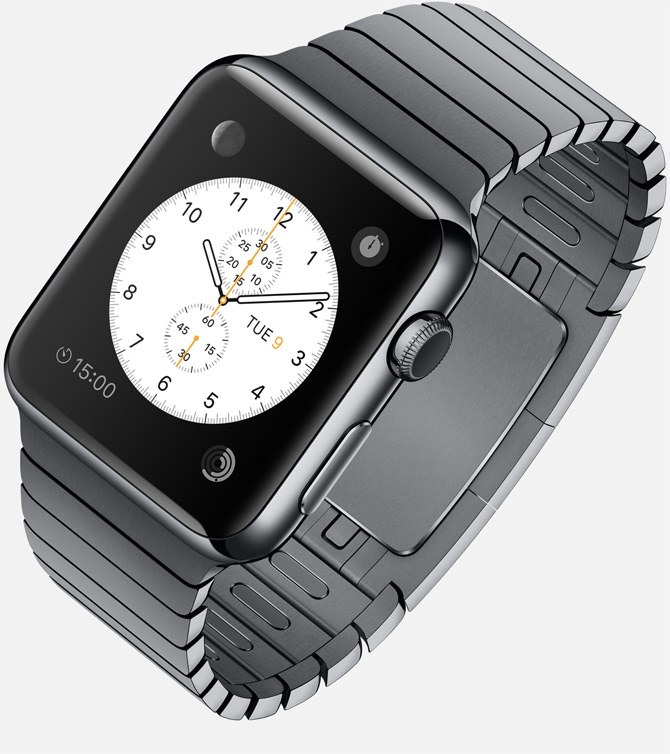
Pitch your Startup, App or Hardware or post a Startup Event or Startup Job
The new Apple Watch is sexy, a fantastic engineering implementation, I love it and want one.
Speaking from experience it is no mean feat to build something so small with so much functionality, the power management must be hell, their integration of the chipset into one sealed module is amazing, when you start to build complex products at such small size waterproofing and environmental hardening is the toughest thing to manage.
Only Apple would create a new Alloy, Rubber and Glass to solve the key problems that exist in developing such a product and it is also amazing that they have managed to create from the same basic concept so many variations which will appeal to just about every conceivable market that matters, in doing so it seems like they have introduced more SKUs in one release than they had in the Apple entire product line.
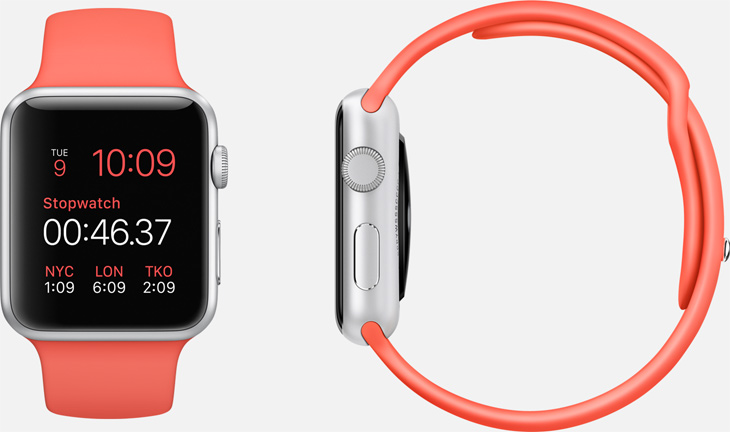 Apple Rumour Mill in Overdrive
Apple Rumour Mill in Overdrive
But sexy aside, in the 6 month lead-up to the announcement there were literally thousands of circular stories about what health sensors the Watch would have, none of which added anything new to the conversation just acted as click bait. One site would make up a story, which would be quoted by another site, all in a desperate bid to drive page views.
Every bloody day I had people who knew I was developing a wearable device sending me the same rehashed shit from a different source about what amazing health sensors the Apple Watch would have, that Apple had been talking to the FDA and that we were expecting the Apple Watch to be like a Star Trek Tricorder (a device which Dr Spock could point at you to diagnose exactly what was wrong with you).
Apple has done a fantastic job with the Watch (despite a number of the images being renders not photos) and I will be in the line to buy one, however sexy as it is, the Apple Watch isn’t a Tricorder, it only measures activity and heart rate, which has been done for some years now by products like Fitbit and Basis Watch.
What About Wearable Tech Companies?
Fitbit and Jawbone execs must be looking for the doors, its clear they need to come up with something new, on the top end they will be squeezed by phones/watches @$200 offering Activity Monitoring and Heart Rate (and the Apple Watch looks a good deal more comprehensive by the inclusion of both a heart rate tracker and by harnessing the GPS and Altimeter of the iPhone) and on the low end they are about to be squeezed by Xiaomi who are shipping a $13 Activity Tracker, which is below the estimated Bill of Materials cost of the Fitbit but has pretty well the same components as the Fitbit.
Keep in mind the Fitbit and Jawbone are essentially a $1 accelerometer wrapped in a rubber band. Yep the cost of the key component in this product is less than a $1 (.85c in bulk from Digikey) total estimated BOM and manufacturing costs around $18 and they have been selling for $60-120 for the last two years.
So you have to think that the Apple Watch is going to hurt them.
While Apple have done a great job in wrapping very intuitive smart software around the sexy new materials and functionality there are a bunch of things Apple Watch still can’t do that I think are vital for human health which must give Wearable Tech startups a lot of hope.
The Future of Medicine
If you believe, as I do, that the future of good medicine is proactively keeping people out of hospitals then you have to believe that there is a need for smart devices that measure key bodily functions in real time on a daily or constant basis and that they are a proactive step to reducing massive health costs and increasingly lower quality of life for people who get ill.
You want to avoid going to hospitals, bad shit happens there, people die all the time, often not even from what they were admitted for.
So if you want to keep people out of hospital then you need to be able to proactively provide them the sort of bodily feedback they need to maintain their bodies before it turns into a life threatening issue.
Cars have had this basic real time measurement and alert functionality for 50 years, now engine management and car software is incredibly advanced, yet humans haven’t had this basic information system for the body and really still don’t.
I think its essential to arrest the decline of the health of Western countries and exercise and diet aside there are some critical key health measurements that the Apple Watch can’t perform but really should.
Disclaimer: Im not a Doctor, however I have spent the last year building wearable devices that measure some of these parameters so I have a very practical understanding of the challenges involved.
Blood Pressure
The new Apple Watch can’t do blood pressure. This infographic posted by Vox Media yesterday shows why it should.
Vox released a donations to various health related charities vs the proportion of deaths in the US caused by Heart Disease vs the donations to charity, its a great read on why Viral Memes shouldn’t dictate where we put our charitable donations.
High Blood Pressure is a key indicator and cause of heart disease, if you wanted to prevent heart disease measuring blood pressure and regularly reporting it is key enabling technology.
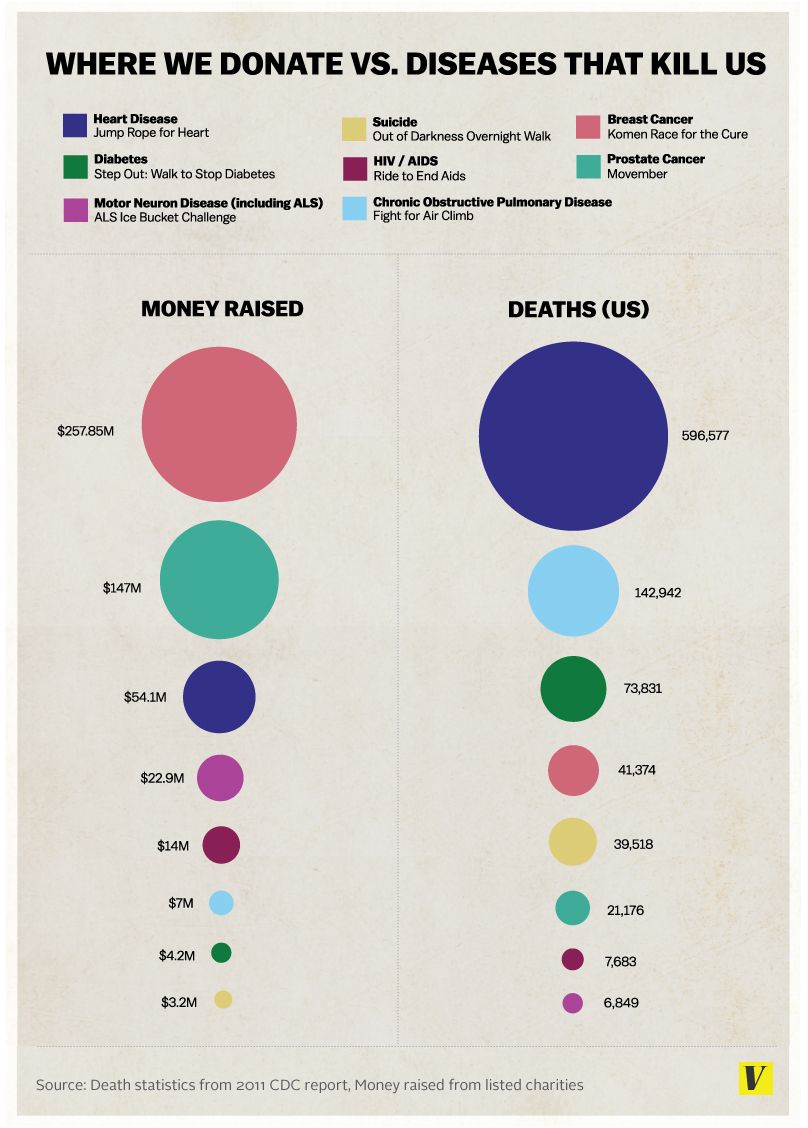
Its been known that Blood Pressure is a major driver of heart disease for decades but almost all the devices for measuring blood pressure are big and bulky and cannot be done in real time or by the end user.
I recently had the misfortune to discover I have elevated blood pressure, the Doctor (who was just crap, but this deserves another story about why they should be replaced by computers with sensors) told me to buy a device to check myself at home so being the tech geek I am I went looking for a wearable blood pressure monitor.
But there aren’t any.
They don’t exist.
The closest I could find was the iHealth Wrist cuff which is much better than most of the competitors but is still not wearable, its way too big to button a shirt on nor is it able to do real time checks.
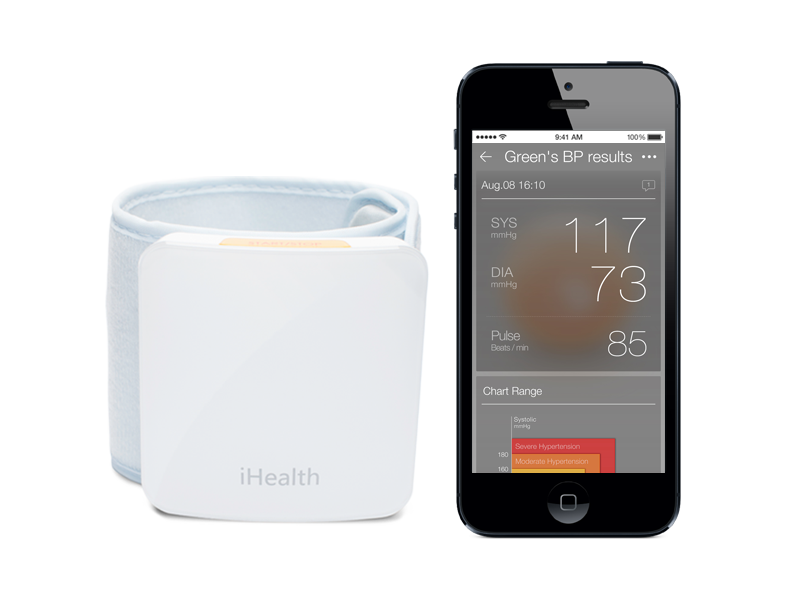
The hard thing about implementing this into a Watch arrangement is the requirement to have the big bulky band to squeeze the arm tightly in order to measure the Systolic and Diastolic pressure.
Any implementation to a smart device would need to resolve this, I doubt that it would be acceptable to the user to measure BP using a huge band to squeeze every 5 minutes so some how this needs new inventions to allow it to be miniaturised and to measure without squeezing the arm.
It would also of course need FDA approval.
Hydration
More than 500,000 people a year are admitted to hospital in the US with dehydration as the primary cause. More than 10,000 of these die in the hospital. Cost estimates of preventable hospital admissions for dehydration are over $1 billion a year. Severe dehydration has a domino effect with internal organs starting to fail either immediately or over time. Of the patients admitted with dehydration 30% die within a year.
The worst thing is this is in almost all cases totally preventable (yes I know it can be caused by certain diseases, diarrhea and vomiting but this is not what kills most of the oldies), there is no FDA cure needed, just drink enough water.
Sadly humans are terrible at monitoring dehydration, especially the young or the elderly, where they are the most vulnerable.
There are no real-time devices for hydration, the nearest you can get is using a Refractometer which uses light to measure the Specific Gravity of your Urine (its a pain, you have to calibrate the device, pee in a jar, test it and then read the sample, potentially very messy and definitely not real time) or Doctors or Hospitals will use Dip Sticks that contain chemical coated squares which change color based on hydration. You also need to pee in a jar and then test it.
Also Urine output as an indicator of hydration is not real time, you can also be significantly wrong due to the time it takes to ingest water, have it reach the blood, then the kidneys process it to output to the bladder, urine can lag hydration by 30-90 minutes or longer with severe dehydration.
Doctors might also use the pinch test to test your skin on the back of your hand but if this works you are already severely dehydrated.
Athletes especially long distance and professional sports people also suffer massive performance degradation and possible heat stroke if they take to the field even slightly dehydrated, we know of a number of Pro Football teams who test their players for dehydration daily sometimes multiple times in training and in the game and surprisingly they are often dehydrated the morning before training and competitions.
There are some developmental products which use Bio impedance and other technologies but none show signs of shipping anytime soon, at the time of writing there were no other commercially available devices but watch this space.
ECG
Note to all Smart Watch Makers and Tech Journalists: Heart Rate is not ECG.
Many of the new Smart Watches/Devices labeled as ECG monitors are in fact just heart rate monitors.
Most of the Smart Watches/Devices labeled as measuring ECG actually don’t provide a ECG waveform if they did they would require FDA approval which the majority don’t have, they may be using an electrical signal to detect the peak of the heart beat but that’s about it.
Just to be clear Apple is claiming the Watch is a heart rate monitor, they are not trying to claim ECG, in fact the heart rate is taken by 4 LEDs on the base (see pic below) with infra red and near visible light combining to sense when the pulse enlarges the veins and skin. Nice tutorial on how it can be done here by an electronics hobbyist in 2012
Many of the journalists who cover these products don’t know the difference and incorrectly label them all the time, just in case you are uncertain, Heart Rate tells you the rate at which your heart is beating per minute which is great for fitness and general vitality, you can measure this a few ways, its not rocket science and has been around for a long time in hospitals.
ECG on the other hand is far more informative measure, which gives you the precise waveform of your electrical signals which drive the heart muscles.
You can learn a lot from ECG waveforms (really good tutorial here) , as people get older and richer, fatter and sicker, they tend to have more heart problems.
There are literally dozens of conditions which can be diagnosed from ECG which cannot be diagnosed by heart rate.
At the moment the only real time wearable alternative is to wear a Holter Monitor which as you can see below is very invasive and inconvenient, not particularly suitable for any type of exercise.
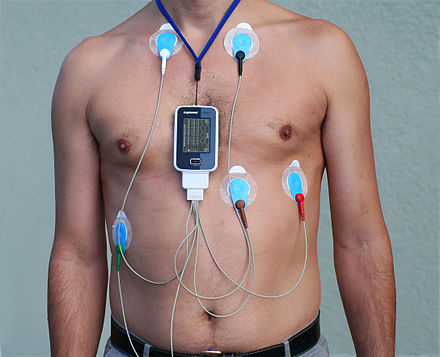
Interestingly the original EKG was created by putting hands and feet in salt water with a small voltage attached and measuring the electrical signals between the limbs and the chest.
In a hospital you would typically have 12 leads but many heart problems can be picked up with a lot less electrodes.
Here is the technical challenge to do this in a wearable device.
You need to be able to measure the electrical signal and difference between two points on the body, the closer together they are the harder it is to measure (gets too noisy and the signal is too weak).
So putting two electrodes on a watch is challenging, they are not really far enough away from each other.
It has been demonstrated in a University study but it is still not ready for mainstream adoption.
Some of the early startups such as Alivecor have achieved a full ECG reading by getting the user to touch the an electrode on the device with both hands which gives two arm measurements but no chest measurement.
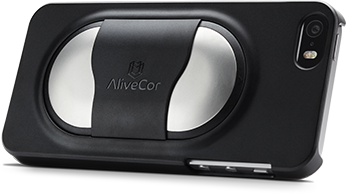
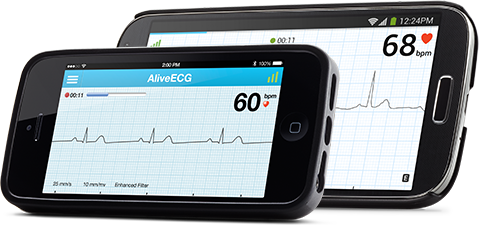
It also depends on what you think you want to be able to detect, some conditions may require the additional leads which give different views of the heart.
My view is the ideal scenario would be an ECG electrode on one device like a smart phone and a coin sized patch which sticks to the chest and relays signal via bluetooth.
Not particularly user friendly but if you need to know when your heart is playing up, you need to know and its a hell of a lot easier to manage than a holter monitor.
You can buy ECG Chips from Texas Instruments and others which are small enough and cheap enough to fit into a wearable device for well under $20.
Interestingly there has been discussion about the Apple Watch and the round metal rings on the iphone base and if they could in fact be ECG or bio impedance electrodes, anything is possible but it does seem to be too close together to enable ECG.

Glucose
This is the holly grail of real time non invasive monitoring. Its a multi billion $ opportunity problem, possibly a trillion $ problem.
Diabetes is the new plague and is sweeping the world and almost certainly will become one of the greatest drivers of early death and health costs if it is not already.
The problem is you need fluids to test (currently).
Which means either inserting something into your skin, mouth (not sure this works), eyes or some other bodily orifice (not sure that would work either).
Current real-time devices use Micro needles on a patch which instruct a pump to deliver insulin, its better than pricking yourself with a needle but its still not ideal, they get infected and have other issues with the skin.
Many approaches are being trialed including a novel experimental one by Google which involves contact lenses which can sense glucose in your tears and transmits a signal back via wireless, however not clear how you would keep this powered for any length of time.
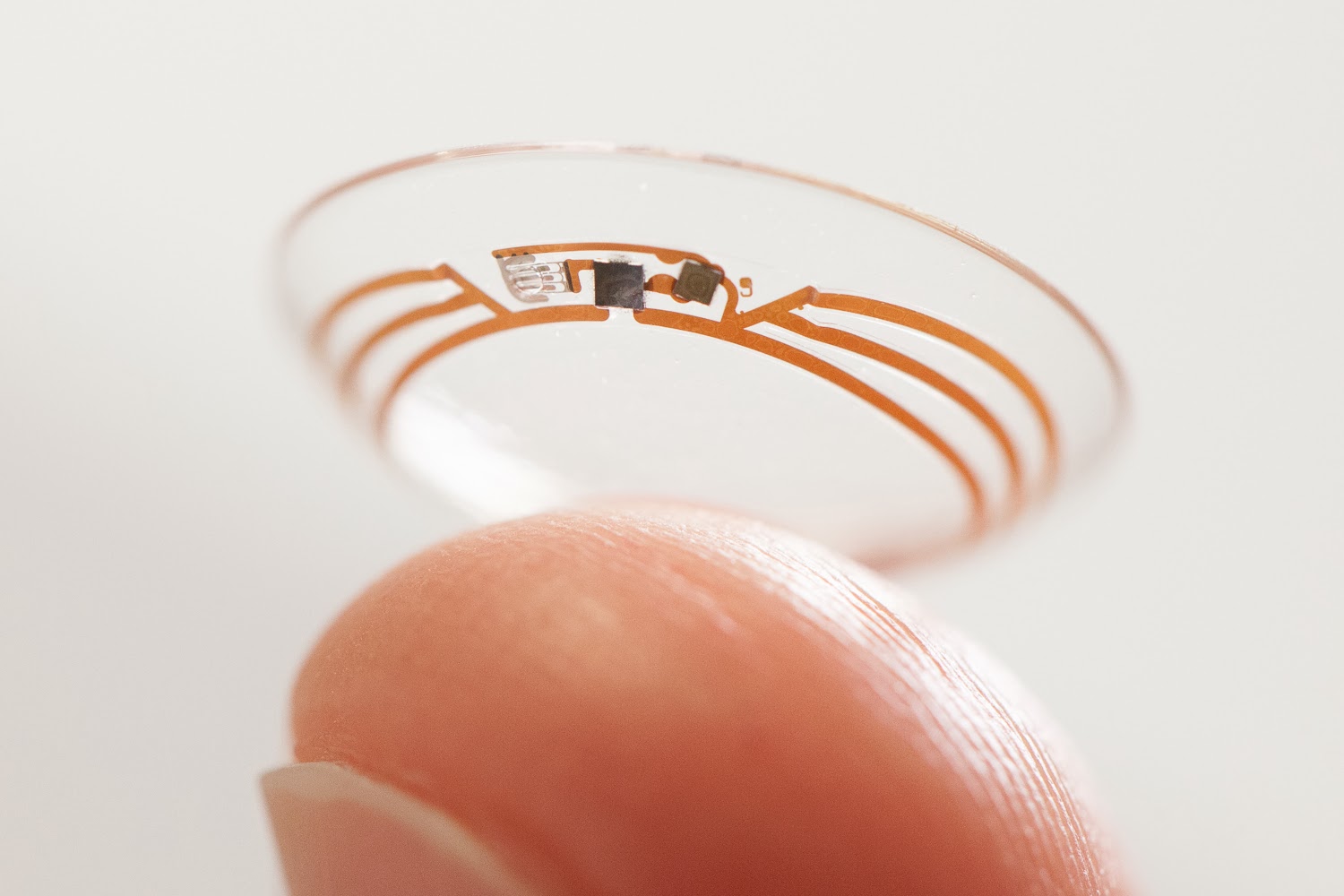
Some of the new approaches involve using various light wavelengths through skin in various locations which are translucent enough such as the ear, Glucose responds differently to the particular wavelengths, so the amount that wavelength is either absorbed or reflected varies by the glucose level in the blood.
The GlucoTrack is a device + app that ultrasonic, electromagnetic and thermal technologies to measure Glucose at the earlobe.
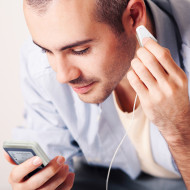
There are a number other developments using radio frequency (60Ghz) such as the Gluco-Wise, both of these are still working on FDA Certification.
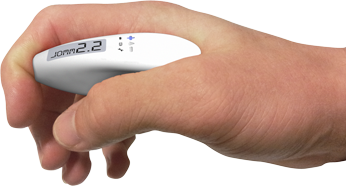
Keep in mind some of these experiments have been ongoing for 20-30 years, Ian Maxwell a regular contributor to Startup88 tells of being a young Chemist working on this problem in the 90s, so its not like Apple can just walk in and knock this one over in a year.
Temperature
This is extremely important in the case of athletes and also in the case of elderly both of whom may be at risk of heat stroke.
This seems relatively simple but it’s not trivial. The key thing you want to know is your core temperature. Recall where you normally measure temperature, you would never have put a thermometer to your wrist, it always goes in your mouth, under arm or rectum or using an infrared thermometer in your ear.
If you are measuring temperature at your wrist, it is significantly cooler than your core.
How much you ask? That depends on the ambient temperature and any prevailing conditions such as wind or your clothing.
To do this properly at the wrist you need to be able to sense skin temperature and adjust it for ambient temperature. Essentially you need an adjustment co-efficient and two separate sensors.
Other Tests
Some lesser but very interesting things that would be useful for Sporting types would be checking for markers which indicate inflammation or injury or in the case of mothers to be to check the ideal condition or time for conception, potentially all of these could be enabled in a wearable.
Conclusion
Its possible Apple still has some tricks up its sleeve. It is possible that the Apple Watch could in fact have ECG chip sets and bioimpedance sensors in those rings and then again it might not.
The Apple Watch is sexy and I want one however it still leaves a lot to be desired as far as health monitoring.
This is good and bad news for wearable device startups, the bad news is that if you are making a pure activity monitor you are going to struggle to maintain margins as you get pressure from above and below.
The good news is if you are working on a wearable device that solves any of these problems Apple hasn’t killed your product and there is still a lot of headroom for complimentary products that communicate with and interoperate with the Apple Healthkit or Google Fitness API.
I would love to hear about any new Health Monitoring Devices either commercial or hobbyist projects.
Leave me a message in the attached form about your product and I will write up a story about it
[contact-form subject=’Startup88 – Feedback Form What are you working on?’][contact-field label=’Name’ type=’name’ required=’1’/][contact-field label=’Email’ type=’email’ required=’1’/][contact-field label=’Website’ type=’url’/][contact-field label=’What are you working on?’ type=’textarea’ required=’1’/][/contact-form]
Related articles
Pitch your Startup, App or Hardware or post a Startup Event or Startup Job








